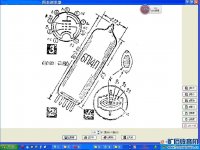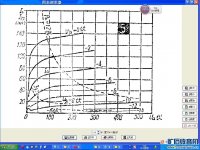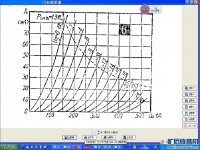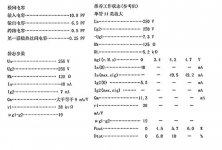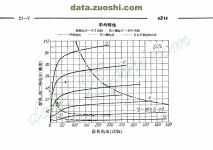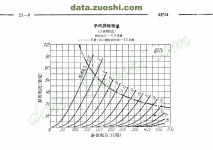Just an extended FYI here, because I had a lot of head shaking reactions about these:
EL84/6BQ5/6P14 (type 1) vs 6P15/SV83 (type 2) vs EL83 (type 3)
AND NO, the 6P1 is not an EL84 type at all, with completely different pinout, and it has been mentioned that it is more like a 9-pin mini version of 6V6, similar to 6AQ5/EL90.
A lot of sellers especially mix up EL83 and SV83/6P15 all the time, which are completely different beasties!

"equivalent" means you can build something similar with a piece, but it is NOT the same and you CANNOT "roll" an equivalent type into the old tube socket! You will likely cause expensive damage, and with the high voltages involved, you can zap yourself a Phyllis Diller hairdo in a split second.
There are three tube types, that often get confused, with potentially catastrophic results!
-
The three types are as follows:
* 1) EL84 also known as (aka) 6BQ5 aka 6P14 (many manufacturers)
* 2) 6P15 aka Svetlana83 (SV83)
* 3) EL83 aka 6CK6 (Philips, Mazda, Tesla, La Radiotechnique)
-
NOTE that the SV83 is NOT an EL83, these are totally different beasts!
-
1 and 2 are compatible, IF you modify your tube socket with a switch, jumper, a tube adapter, or the Hazen mod (0.1uF/400V cap between pin 3 on one cap lead and 1 or 6 on the other), but type 3 is NOT at all compatible with 1 and 2. EL83 requires rewiring, different bias, and power supply setup!
-
Here is why:
* 1 and 2, so EL84 and 6P15 anodes/plates are rated at 12 Watts.
* There are 3 grids in pentodes, one of which is the suppressor grid.
* In the EL84 types, the suppressor is tied to the cathode, so not even on a separate pin to the outside world of the tube.
* In the 6P15/SV83 types, the suppressor is not connected to anything inside of the tube, but tied to pin 1 and pin 6.
* In both the EL84 and 6P15/SV83, the screen grid (aka grid 2) is connected to pin 9 (keep that in mind)
* The actual EL83 (aka 6CK6) is NOT an EL84, and do NOT confuse it with an SV83, because its plate (or anode) is rated at 9-Watts, AND the suppressor is tied to pin 6 only, AND the screen grid is tied to pin 1, with pin 9 empty!
-
So, what happens, if you plug an SV83/6P15 into an EL84/5BQ5 amp? The missing suppressor connection may cause distortion, and maybe nothing catastrophic will happen. Hopefully your ears will tell you something is wrong, you turn it off, wait until the tube cools off, and you plug in your adaptor socket.
I simply made the Hazen mod, aka CCE Decware mod (Christmas comes early), with a 0.1uF cap between pin 3 (cathode) and pin 6(screen grid on 6P15/SV83) on my EL84 sockets. I can still use EL84, and the amp is now fully compatible for both EL84 and 6P15
-
What happens, if you plug an EL83 into an EL84 or SV83 amp?
You potentially get SMOKE, because that 9 Watt plate is overheating and everything is just off, but at the very least your tube, which you may have bought as an antique special for high dollars is most likely red-plated to meltdown and broken.
EL84/6BQ5/6P14 (type 1) vs 6P15/SV83 (type 2) vs EL83 (type 3)
AND NO, the 6P1 is not an EL84 type at all, with completely different pinout, and it has been mentioned that it is more like a 9-pin mini version of 6V6, similar to 6AQ5/EL90.
A lot of sellers especially mix up EL83 and SV83/6P15 all the time, which are completely different beasties!
"equivalent" means you can build something similar with a piece, but it is NOT the same and you CANNOT "roll" an equivalent type into the old tube socket! You will likely cause expensive damage, and with the high voltages involved, you can zap yourself a Phyllis Diller hairdo in a split second.
There are three tube types, that often get confused, with potentially catastrophic results!
-
The three types are as follows:
* 1) EL84 also known as (aka) 6BQ5 aka 6P14 (many manufacturers)
* 2) 6P15 aka Svetlana83 (SV83)
* 3) EL83 aka 6CK6 (Philips, Mazda, Tesla, La Radiotechnique)
-
NOTE that the SV83 is NOT an EL83, these are totally different beasts!
-
1 and 2 are compatible, IF you modify your tube socket with a switch, jumper, a tube adapter, or the Hazen mod (0.1uF/400V cap between pin 3 on one cap lead and 1 or 6 on the other), but type 3 is NOT at all compatible with 1 and 2. EL83 requires rewiring, different bias, and power supply setup!
-
Here is why:
* 1 and 2, so EL84 and 6P15 anodes/plates are rated at 12 Watts.
* There are 3 grids in pentodes, one of which is the suppressor grid.
* In the EL84 types, the suppressor is tied to the cathode, so not even on a separate pin to the outside world of the tube.
* In the 6P15/SV83 types, the suppressor is not connected to anything inside of the tube, but tied to pin 1 and pin 6.
* In both the EL84 and 6P15/SV83, the screen grid (aka grid 2) is connected to pin 9 (keep that in mind)
* The actual EL83 (aka 6CK6) is NOT an EL84, and do NOT confuse it with an SV83, because its plate (or anode) is rated at 9-Watts, AND the suppressor is tied to pin 6 only, AND the screen grid is tied to pin 1, with pin 9 empty!
-
So, what happens, if you plug an SV83/6P15 into an EL84/5BQ5 amp? The missing suppressor connection may cause distortion, and maybe nothing catastrophic will happen. Hopefully your ears will tell you something is wrong, you turn it off, wait until the tube cools off, and you plug in your adaptor socket.
I simply made the Hazen mod, aka CCE Decware mod (Christmas comes early), with a 0.1uF cap between pin 3 (cathode) and pin 6(screen grid on 6P15/SV83) on my EL84 sockets. I can still use EL84, and the amp is now fully compatible for both EL84 and 6P15
-
What happens, if you plug an EL83 into an EL84 or SV83 amp?
You potentially get SMOKE, because that 9 Watt plate is overheating and everything is just off, but at the very least your tube, which you may have bought as an antique special for high dollars is most likely red-plated to meltdown and broken.
Chinese 6N1 is a double triode. Output valve they use frequently is 6P1P, similar with soviet 6P1P and pretty close to EL90.
Shuguang 6P14 is similar to 6P14P from sovtek. I don't know nothing about quality but, in my experience, soviet valve are
more reliable and trustwhorty.
http://www.r-type.org/exhib/aaa1824.htm
Shuguang 6P14 is similar to 6P14P from sovtek. I don't know nothing about quality but, in my experience, soviet valve are
more reliable and trustwhorty.
http://www.r-type.org/exhib/aaa1824.htm
Last edited:
Shuguang 6P14P is similar to 6P14P from sovtek.
I'm looking for the exact spec sheet for the Chinese 6P14, not the Russian 6P14P, and not "similarity" because that is not the same as comparing actual specifications.
www.aliexp05005094963259.html?press.com/item/10dp_npi=2%40dis%21USD%21US%20%2423.39%21US%20%2421.05%21%21%21%21%21%400b89a67e16751466329662762e911c%2112000031637304471%21im
Also, I send a message to seller. Maybe will provide data sheet for 6P14.
Also, I send a message to seller. Maybe will provide data sheet for 6P14.
http://www.crystalradio.cn/thread-747904-1-1.html
http://www.crystalradio.cn/forum.php?mod=viewthread&tid=2054413&highlight=6P14%B5%E7%D7%D3%B9%DC
No pictures display with the translation?
http://www.crystalradio.cn/forum.php?mod=viewthread&tid=2054413&highlight=6P14%B5%E7%D7%D3%B9%DC
No pictures display with the translation?
Attachments
FYI:
I would not really worry about Chinese 6P14 specs, as I found Chinese tubes quite good myself.
I am running Chinese 6P15 as HiFi single ended output tubes, and they sound very clean and sweet with 302V measured against ground at the plate tap of the output transformers. Minus about 8V bias (don't remember, it was roughly that though), they are still running close to 300V and are very comfy, with just a hint of blue-light in the bottle, so actually just perfect.
With exception of the grid 2 pinout, they are identical to 6P14, and from a production line point of view, it would make no sense to use different plates and grids on 6P14 vs 6P15.
Officially, they are spec'd like some 6P14, with 250V max on plate and 200V on grid 2. I have a 1K grid resistor on each tube from the transformer in UL mode.
I am also using cheap 70V PA transformers as output!
6P15 is generally not thought of as a "tough" tube, like some 7189/6BQ5/EL84/6P14 types, and sheet specs often call for 250V plate max, but then I found some sheets with 300+ Volts.
All I can say is, they are stable and do not red plate with my 320 Volt non-regulated full bridge silicon diode power supply.
I did install an extra switch for high-voltage, so I can preheat for a few seconds, before making them hot!
I just got a stash of them, instead of the more expensive 6P14. We are talking as much as 4-times the price for the cheapest 6P14 vs some fantastic deals for 6P15, and since I am not building guitar amps, just a small home-brew stereo SE amp very similar to Decware, those 6P15/SV83 are just dandy for me!
I would not really worry about Chinese 6P14 specs, as I found Chinese tubes quite good myself.
I am running Chinese 6P15 as HiFi single ended output tubes, and they sound very clean and sweet with 302V measured against ground at the plate tap of the output transformers. Minus about 8V bias (don't remember, it was roughly that though), they are still running close to 300V and are very comfy, with just a hint of blue-light in the bottle, so actually just perfect.
With exception of the grid 2 pinout, they are identical to 6P14, and from a production line point of view, it would make no sense to use different plates and grids on 6P14 vs 6P15.
Officially, they are spec'd like some 6P14, with 250V max on plate and 200V on grid 2. I have a 1K grid resistor on each tube from the transformer in UL mode.
I am also using cheap 70V PA transformers as output!
6P15 is generally not thought of as a "tough" tube, like some 7189/6BQ5/EL84/6P14 types, and sheet specs often call for 250V plate max, but then I found some sheets with 300+ Volts.
All I can say is, they are stable and do not red plate with my 320 Volt non-regulated full bridge silicon diode power supply.
I did install an extra switch for high-voltage, so I can preheat for a few seconds, before making them hot!
I just got a stash of them, instead of the more expensive 6P14. We are talking as much as 4-times the price for the cheapest 6P14 vs some fantastic deals for 6P15, and since I am not building guitar amps, just a small home-brew stereo SE amp very similar to Decware, those 6P15/SV83 are just dandy for me!
http://www.crystalradio.cn/thread-747904-1-1.html
http://www.crystalradio.cn/forum.php?mod=viewthread&tid=2054413&highlight=6P14%B5%E7%D7%D3%B9%DC
No pictures display with the translation?
That's for 6P14P, which is EL84/6BQ5 equivalent. Isn't the question, "How different is 6P14 from 6P15 from SV83 from EL83?"
6P14P/EL84/6BQ5 has a lower gm screen grid which can take higher voltage, which is good for UL operation. The 6P14P/EL84 is rated for use with 300V on both its plate and its screen, at the same time. That's why you see it used as an 'audio tube'.
6P15P/EL83 has a higher gm screen grid. The Russian 6P15P data sheet shows its Electrical Characteristics with Ua = 300V and Ug2 = 150V. What's odd is that under Maximum Ratings, it shows 330V for both Ua (plate) and Ug2 (screen grid). I don't know what to make of that. Can you safely use a Russian 6P15P in UL configuration with 300V on both plate and screen?
I've attached the Russian 6P15P data sheet (pdf).
Attachments
Last edited:
Rongon wrote: “The Russian 6P15P data sheet shows its Electrical Characteristics with Ua = 300V and Ug2 = 150V. What's odd is that under Maximum Ratings, it shows 330V for both Ua (plate) and Ug2 (screen grid). I don't know what to make of that. Can you safely use a Russian 6P15P in UL configuration with 300V on both plate and screen?”
My conclusion is, yes, you can, as long as you make sure your screen dissipation (Pg2) stays under 1.5 watts. This is lower than the rating for EL84s and much lower than the 6P14P-EVs, so I expect that is the reason for the abundant cautions that 6P15P is a “fragile tube”. In @lapratho ’s application above, if I understand correctly, he does that with 300+V across both screen and plate in UL configuration with a 1 k screen grid resistor.
I am gearing up for an amplifier build using Tubelab’s SPP PCB and topology, but with variable screen and control grid bias capabilities where I would like to explore these very questions. Hope to have the answers in 8 weeks.
My conclusion is, yes, you can, as long as you make sure your screen dissipation (Pg2) stays under 1.5 watts. This is lower than the rating for EL84s and much lower than the 6P14P-EVs, so I expect that is the reason for the abundant cautions that 6P15P is a “fragile tube”. In @lapratho ’s application above, if I understand correctly, he does that with 300+V across both screen and plate in UL configuration with a 1 k screen grid resistor.
I am gearing up for an amplifier build using Tubelab’s SPP PCB and topology, but with variable screen and control grid bias capabilities where I would like to explore these very questions. Hope to have the answers in 8 weeks.
Last edited:
https://bbs-hifidiy-net.translate.g...l=auto&_x_tr_tl=en&_x_tr_hl=en&_x_tr_pto=wapp
So in triode connected 6p15, you can't connect to screen directly to plate (maybe via a zener bypassed with cap). The screen is red hot if you plug in a 6p15 in 6p14 socket.
So in triode connected 6p15, you can't connect to screen directly to plate (maybe via a zener bypassed with cap). The screen is red hot if you plug in a 6p15 in 6p14 socket.
That's for 6P14P, which is EL84/6BQ5 equivalent. Isn't the question ...
No, I'm looking for an actual spec sheet for the Chinese-made 6P14 and not the Russian-made 6P14P. I want to compare them directly.
The tube name is simply 6P14, as displayed below, the tube characteristics is clear enough to make model with:
https://www.sgss8.com/tpdq/20597853/
https://www.sgss8.com/tpdq/20597853/
Attachments
- Home
- Amplifiers
- Tubes / Valves
- EL84/6BQ5/6P14 vs 6P15/SV83 vs EL83 confusion
